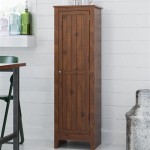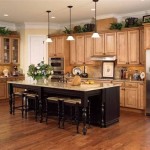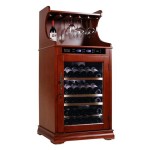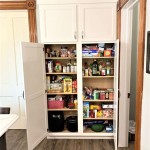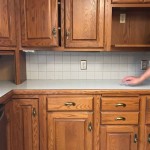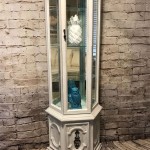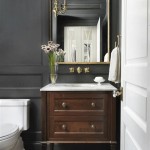Cabinet Knob Placement: A Comprehensive Guide
Choosing the right cabinet hardware can significantly impact a kitchen or bathroom's overall aesthetic. While style and finish are crucial considerations, proper knob placement is equally important for both functionality and visual appeal. Incorrect placement can lead to difficulties in opening and closing cabinets, as well as an unbalanced or awkward appearance. This guide provides a comprehensive overview of cabinet knob placement best practices.
Standard Knob Placement for Doors
For standard cabinet doors, there are two primary placement options: vertically aligned on the upper corner opposite the hinges or horizontally centered on the rail. Both options offer distinct advantages and are suitable for various cabinet styles.
Upper Corner Placement
Placing the knob in the upper corner opposite the hinges is a classic choice, particularly for traditional or transitional kitchens. This placement provides excellent leverage for opening the door and is generally considered ergonomic. It also lends a clean, symmetrical look, especially when applied consistently across all cabinetry.
Centered on Rail Placement
Positioning the knob horizontally centered on the rail offers a more modern and minimalist aesthetic. This placement is often preferred for slab-style doors or those with minimal detailing. While it may require slightly more effort to open compared to upper corner placement, it can create a striking visual effect when paired with the right hardware.
Considerations for Different Door Styles
The optimal knob placement can vary depending on the specific door style. Factors such as the presence of raised panels, decorative elements, and the overall size and proportion of the door should be considered.
Shaker-Style Doors
For Shaker-style doors, the upper corner placement is often the preferred choice. This placement complements the clean lines and simple design of the Shaker style. It also ensures the knob does not interfere with the recessed panel detailing.
Raised Panel Doors
Raised panel doors offer more flexibility in knob placement. Both upper corner and centered rail placement can work well, depending on the specific design of the raised panels. Care should be taken to ensure the knob does not clash with the contours of the panel.
Slab Doors
Slab doors, characterized by their flat, unadorned surface, are ideal for centered rail placement. This placement emphasizes the minimalist aesthetic of the slab door and creates a sleek, modern look.
Placement on Drawers
Drawer knob placement is generally straightforward. Knobs should be centered horizontally and vertically on the drawer front. This placement provides balanced leverage and a symmetrical appearance.
Multiple Knobs on Larger Doors and Drawers
Larger doors or drawers may require two knobs for optimal functionality and visual balance. For doors, the knobs should be placed equidistant from the center and vertically aligned. For drawers, the knobs should be centered horizontally and spaced evenly across the drawer front.
Measuring and Marking for Accurate Placement
Accurate measurement is crucial for consistent and aesthetically pleasing knob placement. Using a template or jig can help ensure precise placement across all cabinets and drawers.
Tools for Measurement and Installation
Several tools can assist in accurate knob placement and installation, including a tape measure, pencil, drill, and screwdriver. A specialized jig designed for cabinet hardware installation can further simplify the process and ensure consistent results.
Template Usage for Consistency
Using a template ensures consistent knob placement across all cabinets and drawers. Templates can be purchased or created from a sturdy material like cardboard or thin plywood. They are particularly useful for larger projects or when multiple individuals are involved in the installation process.
Drilling Pilot Holes
Drilling pilot holes before installing the knobs is essential to prevent the wood from splitting. The pilot hole should be slightly smaller than the screw diameter and centered on the marked location.
Special Considerations for Inset Doors
Inset doors, which sit flush within the cabinet frame rather than overlaying it, require careful consideration for knob placement. The knob should be positioned to allow sufficient clearance for the door to open and close freely without interfering with the frame.
Adjusting Placement for Specific Hardware
The specific design of the chosen hardware can also influence placement. Oversized knobs or pulls may require adjustments to standard placement guidelines to ensure proper functionality and visual balance. Consider the proportions of the hardware in relation to the door or drawer size.
Balancing Aesthetics and Functionality
Ultimately, the optimal knob placement will depend on a balance of aesthetics and functionality. While adhering to standard guidelines provides a good starting point, personal preferences and the specific characteristics of the cabinetry should also be considered.

Cabinet Hardware Placement Guide

Where To Place Cabinet Hardware Emtek

How To Place Cabinet Knobs Pulls

How To Place Cabinet Knobs Pulls

The Ultimate Guide For Cabinet Hardware Placement And Sizing Kitchen Inspiration Design

Cabinet Knob Placement Mog Kitchen Bathroom Remodeling Marietta

Cabinet Hardware Installation Guide At Cabinetknob Com

Cabinet Hardware Placement Guide

Design 101 Cabinet Hardware Placement Lark Linen

Hardware Placement
Related Posts

